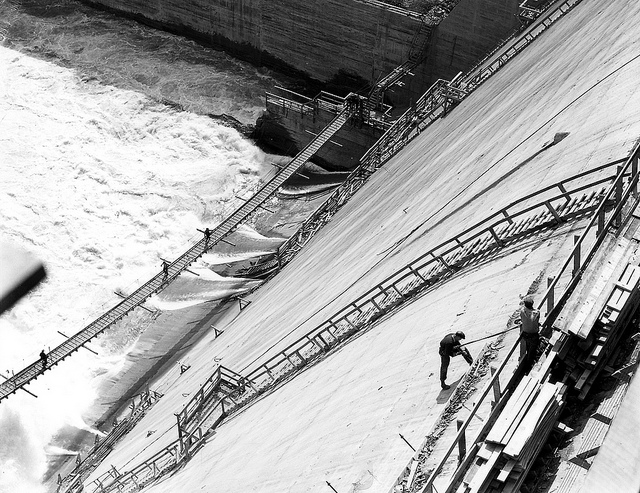There is no substitute for hard work. –Thomas Edison
All my sympathies are on the side of those who toil–of those who produce the real wealth of the world–of those who carry the burdens of mankind. – Robert Green Ingersoll (from the essay “Eight Hours Must Come”, 1890)
In May of 1933 amid the Great Depression, the U.S. Congress created the Tennessee Valley Authority. Its mission was to provide flood control, navigation aid, electricity, fertilizer and promote economic growth in the southeastern region of the United States.
At a time when 90% of urban areas in the U.S. had electricity, the Tennessee Valley was without. Prohibitive costs, and an assumption that the average rural resident could not afford to pay a bill kept the South in the relative ‘dark.’
During a period of disastrous flooding along the Mississippi River and the catastrophic drought in the west, it was the view of the Roosevelt Administration that the government needed to step in assist in solving these problems. It was hoped the project could help to alleviate the crushing poverty that resulted from the worldwide economic depression. And so the Norris Dam was conceived. Budgeted at $34,000,000 (in 2015 dollars, roughly $624 million) the dam would be started in 1933 and completed in just a few short years. George Norris was a longtime proponent of government owned utility and a champion of the TVA. The first power generators went online in 1936.
The building of the dam took an enormous amount of skill by the engineers and planners. It was to be poured concrete, and of a visual style that was modern and therefore off-putting to many traditionalists. More than 9,000 people employed by the TVA built this and many other dams during this period.
Workers would become skilled at dredging, blasting rocky walks with explosives and operating the gigantic machinery designed to crush the rocks. The crushed rock would be mixed into concrete and become both become both the dam itself and hundreds of miles of paved roads throughout the valley.
Generally working in shifts of 5.5 hours, these laborers created what would become a worldwide leader in providing both power and the precedent for much of the future of the country.
During World War II, aluminum was needed to build planes and ordinance in massive quantity, produced rapidly and continually. It followed that the massive amount of power needed for the urgent undertaking would be provided largely by the TVA. The dams in place from the 1930s and then more that a dozen newly-erected hydroelectric power plants would give the energy needed to allow still thousands more men and women the means necessary to exercise their skills and their labor.
Reviewing at a high level we see projects that required skilled labor workers – hardworking Americans. Their grit and knowledge of how to build, create, sweat, and labor created not only things that changed the landscape and infrastructure in Tennessee, but also provided them with money needed to care for their families. They were examples of the working class, and they were models for future generations.
Carpenters, framers, roofers, painters, plumbers, electricians, cabinet makers, landscapers, flooring installers, iron workers, concrete workers, bricklayers, these are all examples of tradesmen who changed the way we live. Their knowledge of how to build and their determination to complete a job is still with us today. So we celebrate the construction worker and the way they continue to shape our country.
Photo: Tennessee Valley Authority

